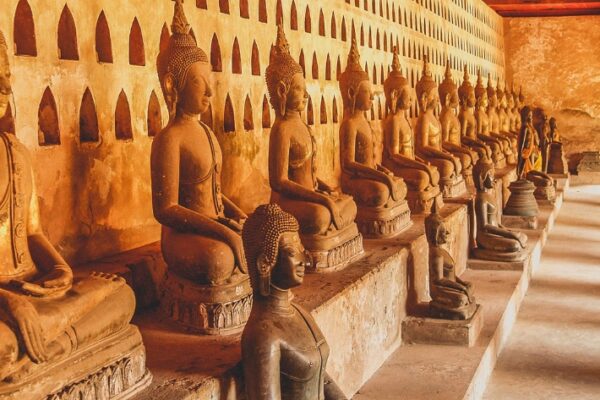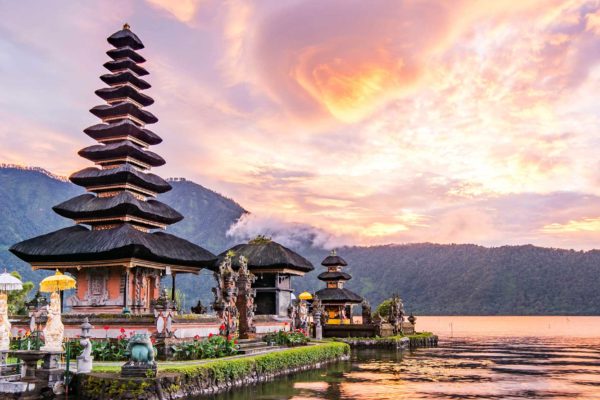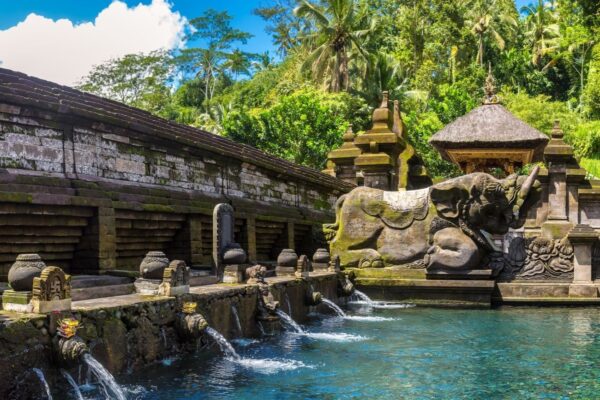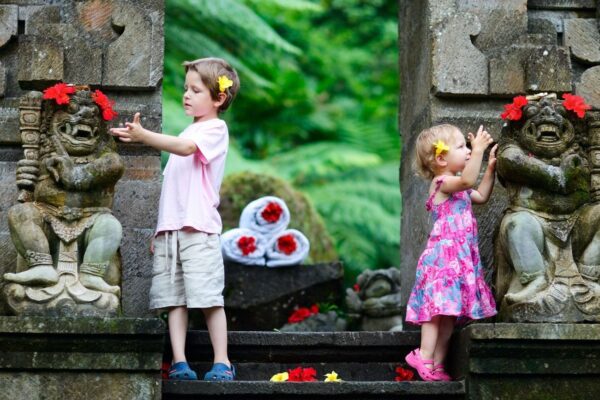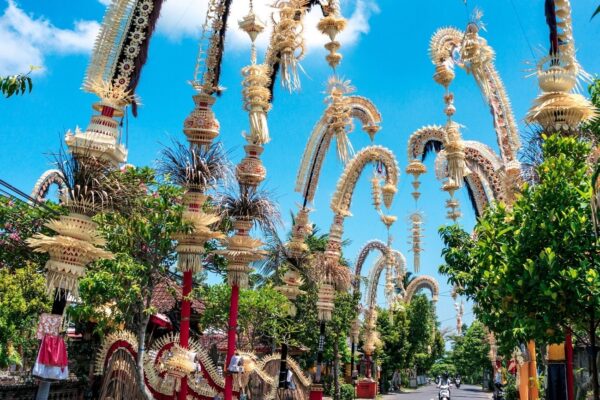Top 14 Ancient Temples in Bali for Culture and Spiritual Travel
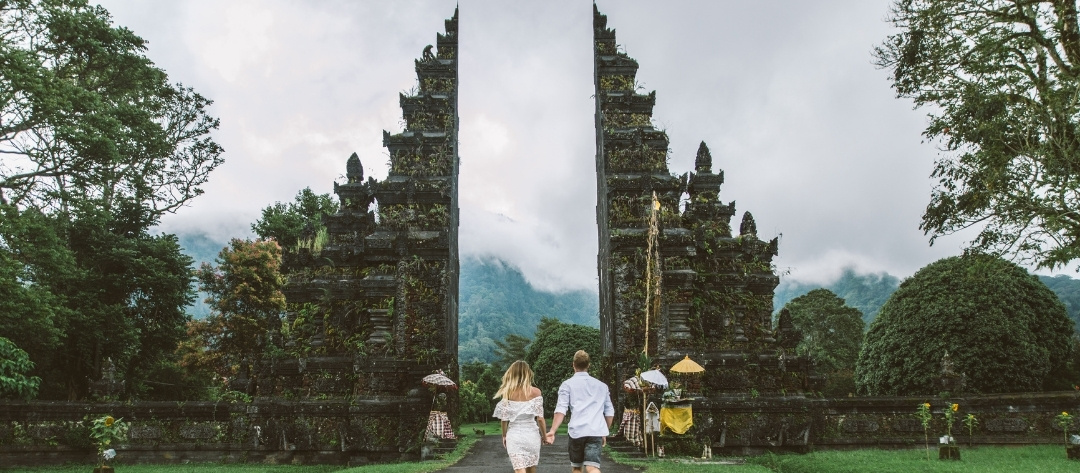
Bali is often called the Island of the Gods, and nowhere is this spirit more alive than in its temples. Scattered across cliffs, lakes, jungles, and villages, the ancient temples in Bali are more than monuments—they are living sanctuaries that hold centuries of myth, devotion, and mystery. Some rise from the sea, others hide in valleys, yet each tells a story of faith and tradition.
This article explores the island’s most remarkable sacred sites, guiding you through their history, significance, and the experiences that make them essential stops on any journey to Bali.
14 Most Fascinating Ancient Temples in Bali You Must Visit
From coastal shrines to mountain sanctuaries, Bali offers a remarkable collection of sacred sites where history, mythology, and devotion intertwine.
Goa Gajah (Elephant Cave)
Goa Gajah, also known as the Elephant Cave, is located near Ubud in Bedulu Village and dates back to the 9th century, although some accounts place its origins in the 11th century. Discovered in the early 20th century, it carries a weight of history tied to the reign of Anak Wungsu. This mysterious site blends Hindu and Buddhist influences, where ancient relics and sacred pools suggest centuries of ritual and meditation.
The entrance, carved with demonic faces and mythical creatures, gives the cave a haunting aura that captures the imagination. Inside, niches for meditation remain intact, while outside, fountains with female figures still pour water as they have for centuries. A walk through its gardens and pools feels like stepping back into Bali’s mystical beginnings.
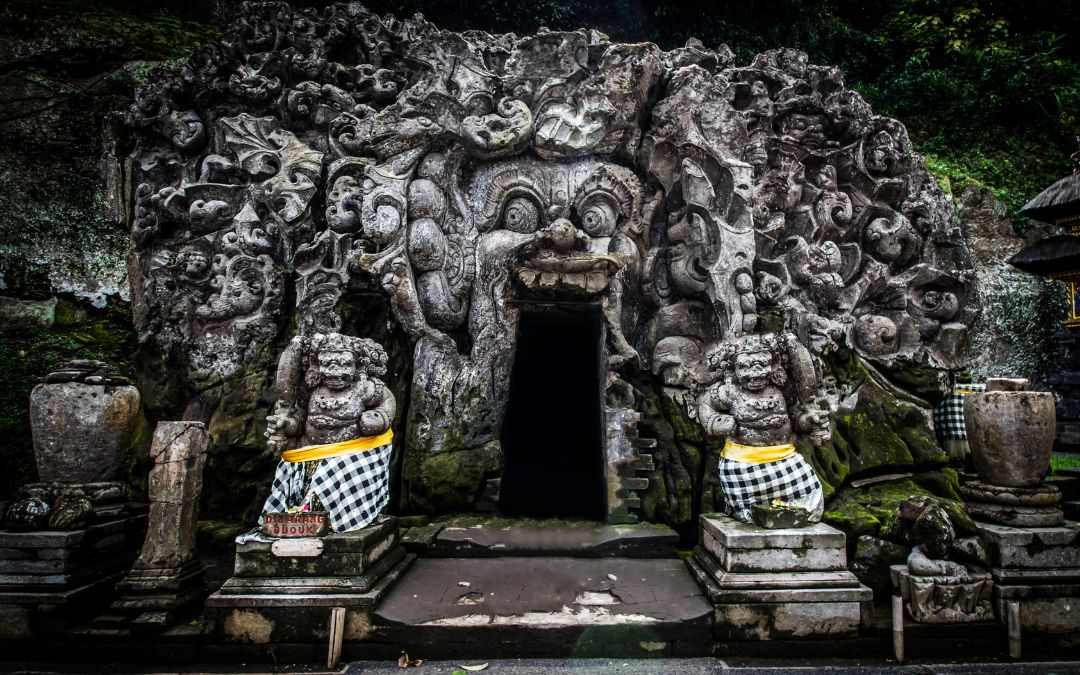
Goa Gajah features a mysterious 11th-century rock-cut façade.
Tips for visitors:
- Wear a sarong and sash, provided at the entrance.
- Comfortable shoes are recommended for stone paths.
- Combine your visit with the nearby Archaeology Museum.
Pura Besakih (Mother Temple)
Pura Besakih, Bali’s Mother Temple, rises majestically on the slopes of Mount Agung and is considered the island’s largest and most sacred temple complex. Its history stretches to the 9th century, coinciding with the arrival of Hinduism from Java, making it both ancient and foundational to Balinese spirituality. This sprawling complex comprises 23 temples across six levels, set amidst dramatic landscapes of mountains, rivers, and rice fields.
For centuries, it has been the center of Balinese Hindu life, hosting more than 70 ceremonies annually. During Odalan and other festivals, the complex comes alive with vibrant offerings, processions, and chants, leaving visitors with a sense of timeless reverence. Walking among its tiered shrines, it feels as though each stone whispers the prayers of generations.
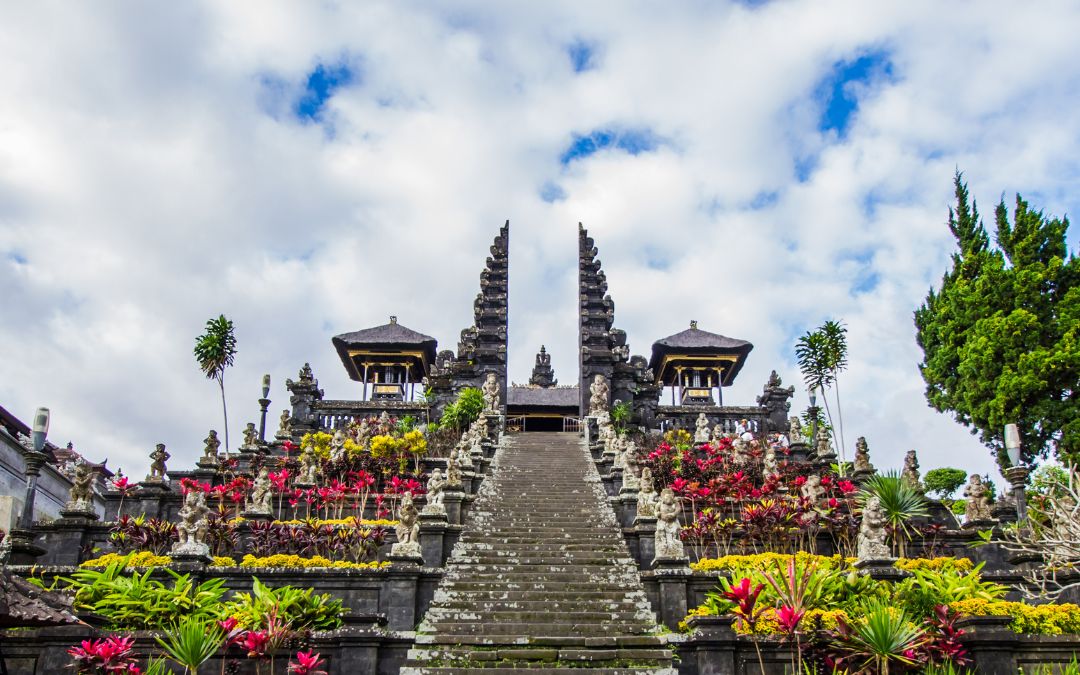
Pura Besakih sits majestically on Mount Agung’s slopes.
Tips for visitors:
- Visit in spring for cooler weather and clearer skies.
- Respect local customs by wearing a sarong and sash.
- Attending a festival provides a deeper cultural insight.
Tirta Empul (Holy Water Temple)
Tirta Empul, located in Manukaya Village, is one of Bali’s oldest water temples, founded in 962 AD under the Warmadewa dynasty. For more than a thousand years, locals have believed its springs carry sacred powers to cleanse the soul. At the heart of the temple, crystal-clear pools are fed by holy springs where the purification ritual melukat is performed.
Here, Balinese Hindus line up to immerse themselves under spouts of water, a practice meant to wash away negativity and restore purity. Statues of sacred animals such as singan and nandi reinforce the ancient atmosphere. Even non-Hindu visitors are welcome to participate respectfully in the ritual, adding a deeply personal dimension to the visit. The temple’s enduring presence makes it one of Bali’s most mysterious sanctuaries, where water is not just life, but divinity itself.
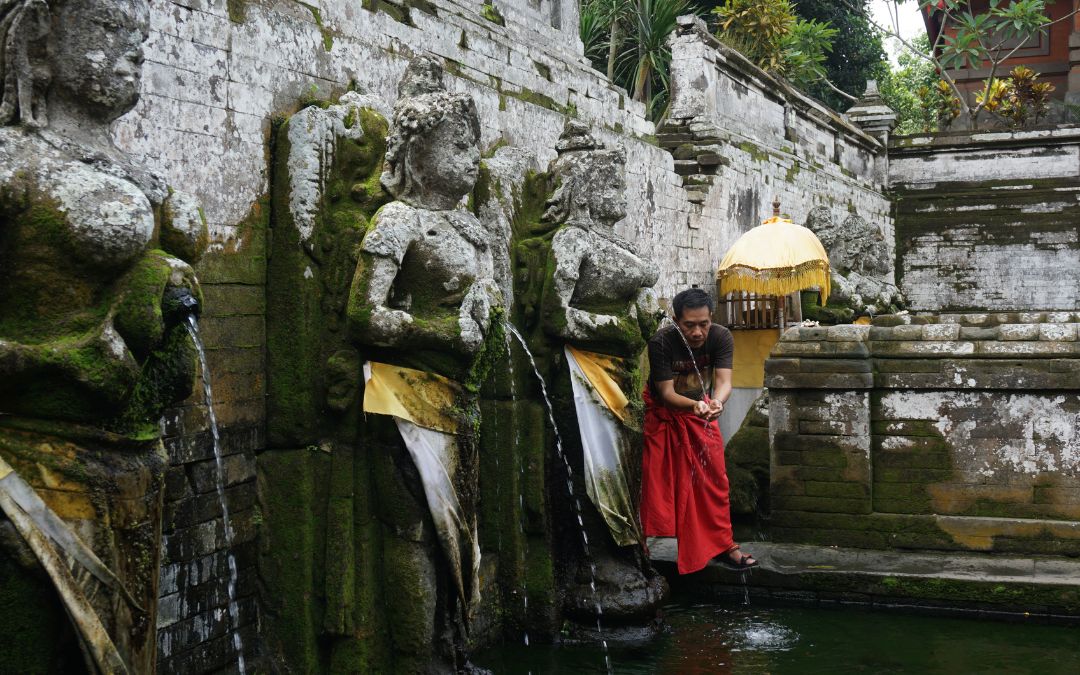
Locals visit Tirta Empul for sacred water purification rituals.
Tips for visitors:
- Sarongs are required for entry and provided on-site.
- Follow the temple guidelines before joining the purification ritual.
- Pair your visit with Istana Tampaksiring, the nearby presidential palace.
Pura Pancering Jagat (Temple of the World’s Navel)
Pura Pancering Jagat stands on the eastern edge of Lake Batur in the ancient village of Terunyan. This temple is among the most archaic in Bali, holding a profound megalithic heritage that predates many other shrines. At its heart stands the Datonta statue, a four-meter stone figure believed to embody the supreme deity of Terunyan. Its features are simple yet unsettling, with a fearsome face that has watched over the village for centuries.
The statue’s commanding presence and raw craftsmanship evoke a time when faith was expressed through monumental stone rather than ornate carvings. Villagers continue to venerate Datonta, making this temple not only a relic of the past but also a living connection to Bali’s most ancient spiritual traditions. For visitors, it offers a rare glimpse into the island’s mysterious pre-Hindu legacy.
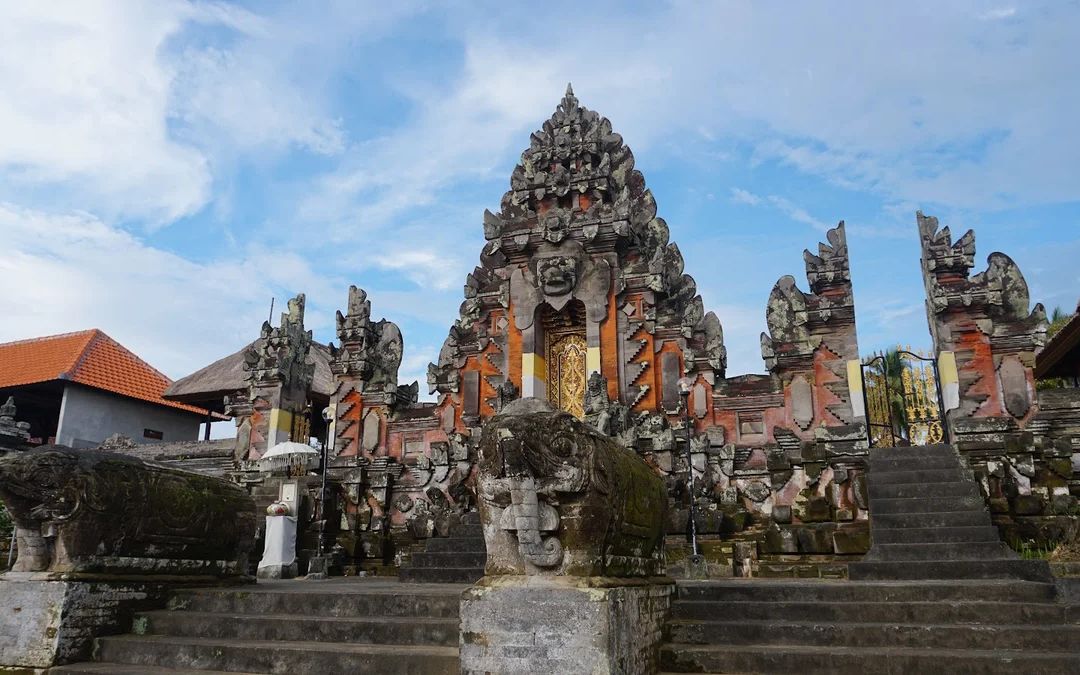
Pura Pancering Jagat houses a towering 4-meter stone statue.
Tips for visitors:
- Respect the community’s traditions, as Terunyan is a deeply spiritual place.
- Combine the visit with a boat trip on Lake Batur.
- Photography should be discreet and respectful.
>> Read More: What to Do in Bali for 7 Days – A Perfect Itinerary for First Timers
Pura Luhur Besi Kalung (Temple of the Iron Necklace)
Pura Luhur Besi Kalung rests on the southern slopes of Mount Batukaru and dates to the 10th–11th century. Its name, “Iron Necklace,” comes from the unique relic it guards: an elliptical statue adorned with a circular band resembling a necklace. What makes this relic remarkable is its acoustic property—when struck, it resonates with a powerful sound, a mysterious quality that has fascinated worshippers for centuries.
Surrounded by thick mountain forests, the temple feels hidden and sacred, a place where time slows and the divine seems to linger. Though less known than Besakih or Tirta Empul, it carries an aura of ancient power that rewards those who make the journey. Standing before the enigmatic statue, visitors cannot help but sense a connection to Bali’s forgotten rituals.
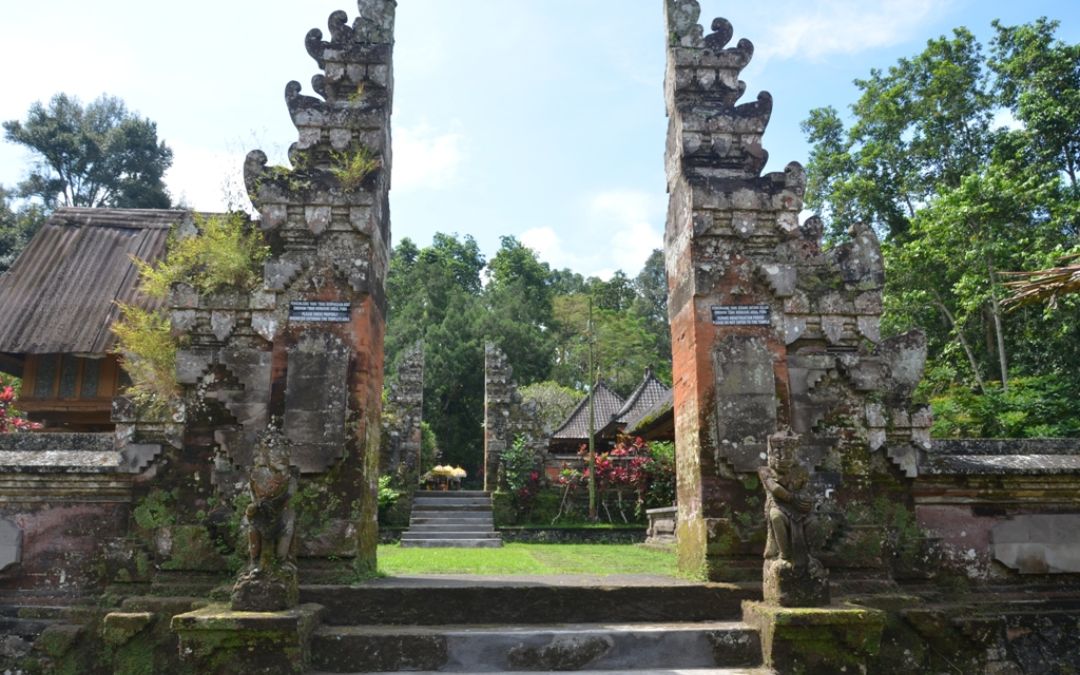
Pura Luhur Besi Kalung rests deep in Bangli’s remote jungle.
Tips for visitors:
- The temple is remote, so plan transport carefully.
- Wear modest clothing suitable for mountain weather.
- Enjoy the natural beauty of Mount Batukaru’s slopes nearby.
Uluwatu Temple
Perched dramatically on a 70-meter cliff above the Indian Ocean, Uluwatu Temple feels as though it has guarded Bali’s southern coast for eternity. Built in the 11th century to honor Hyang Widhi Wasa, the temple is both ancient and elemental, its presence shaped by sea winds and pounding waves.
Legend says the monkeys living around the temple protect it from evil spirits, a belief still alive today. Its clifftop position makes it one of the island’s most spectacular vantage points, particularly at sunset, when the horizon glows red and the temple silhouette appears timeless. Visitors are drawn not only by its mystique but also by the fiery Kecak dance performed at dusk, a ritual that seems to merge myth with the roar of the ocean.
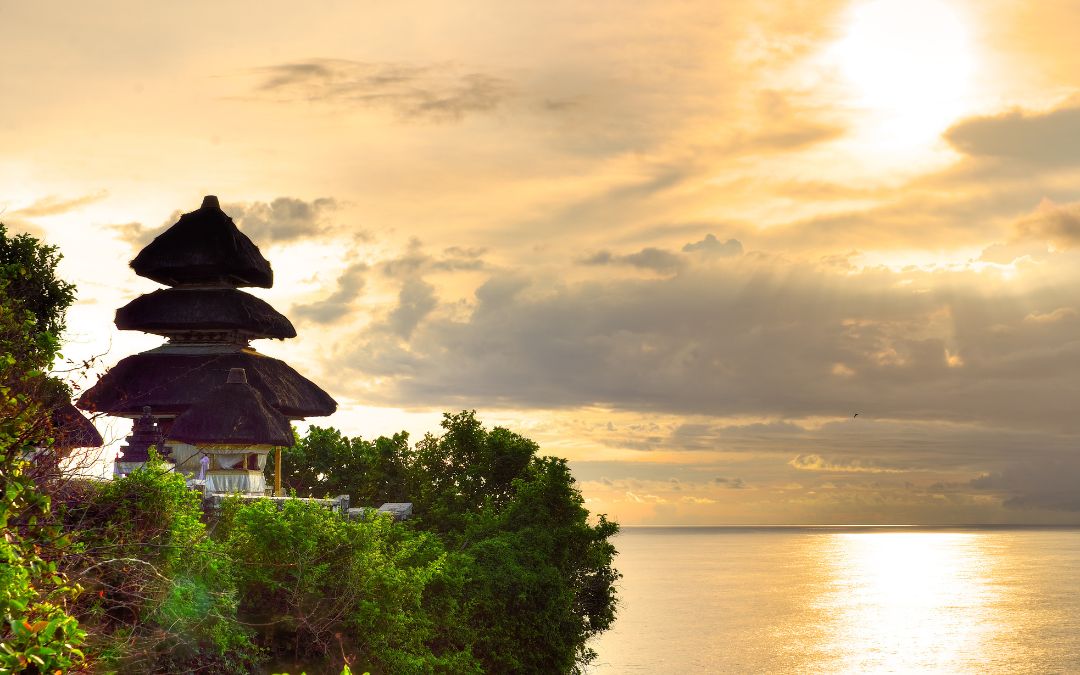
Sunset views from Uluwatu Temple are breathtakingly iconic.
Tips for visitors:
- Visit at sunset for the most dramatic atmosphere.
- Wear a sarong and sash provided at the entrance.
- Combine your visit with a seafood dinner at nearby Jimbaran Bay.
Gunung Kawi Temple
Hidden deep within the lush Pakerisan River Valley, Gunung Kawi Temple reveals its secrets only after a descent through rice terraces and stone steps. Dating back to the 11th century, this cave temple is believed to be the royal burial complex of King Anak Wungsu and his family.
Carved directly into cliffs, ten towering shrines stand as ancient sentinels, their sheer scale leaving visitors awestruck. Inscriptions etched into the stone confirm its royal connection, whispering stories of kings and dynasties long gone. The silence here is powerful; the natural setting, combined with monumental cliff carvings, creates a sense of sacred permanence. Every corner feels like it hides a forgotten tale of Bali’s earliest rulers, making this temple not just historical but profoundly mysterious.
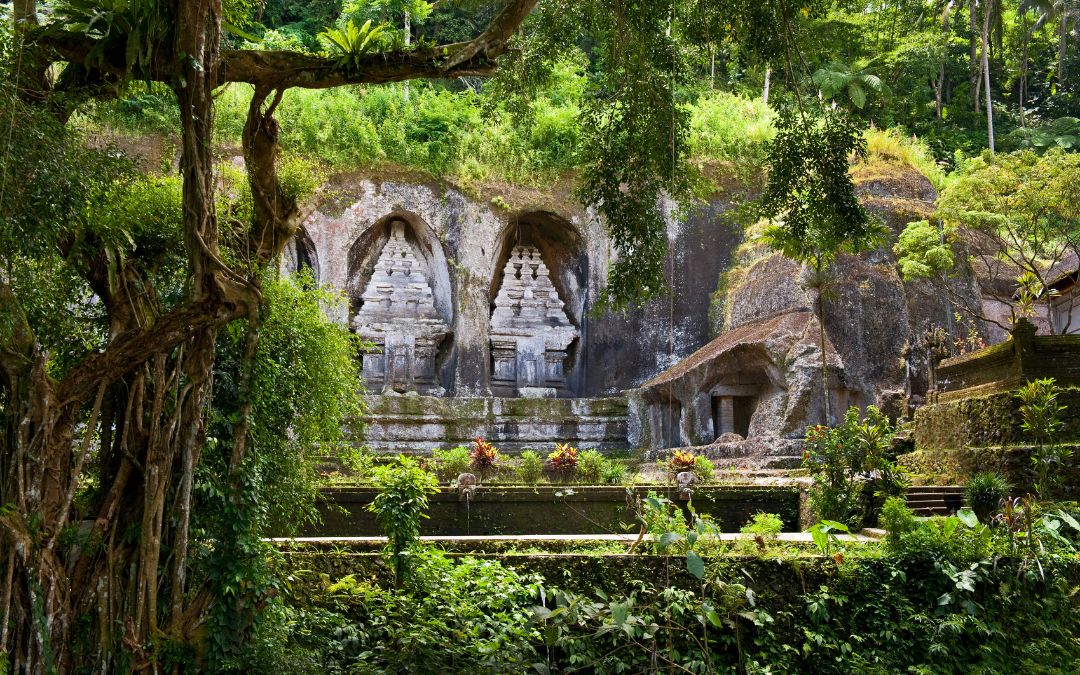
Gunung Kawi Temple boasts ancient shrines carved into cliffs.
Tips for visitors:
- Be prepared for many steps; wear good walking shoes.
- A sarong and sash are required for entry.
- Often combined with the Goa Gajah on temple tours.
Pura Luhur Batukaru
Deep in the forests on the southern slopes of Mount Batukaru lies Pura Luhur Batukaru, one of the ancient temples in Bali. Established in the 11th century as one of the island’s nine directional temples, it was designed to protect Bali from dark forces. Though nearly destroyed during warfare in 1604, it was rebuilt in 1959, continuing its ancient legacy.
Cloaked in mist and surrounded by dense jungle, the temple exudes a primeval energy that feels untouched by time. At its center stands a seven-tiered pagoda dedicated to Mahadeva, the guardian deity of Mount Batukaru. Much of the complex remains hidden from ordinary visitors, visible only during sacred rituals, which heightens its aura of secrecy. To stand here is to feel the weight of centuries pressing through the forest canopy.
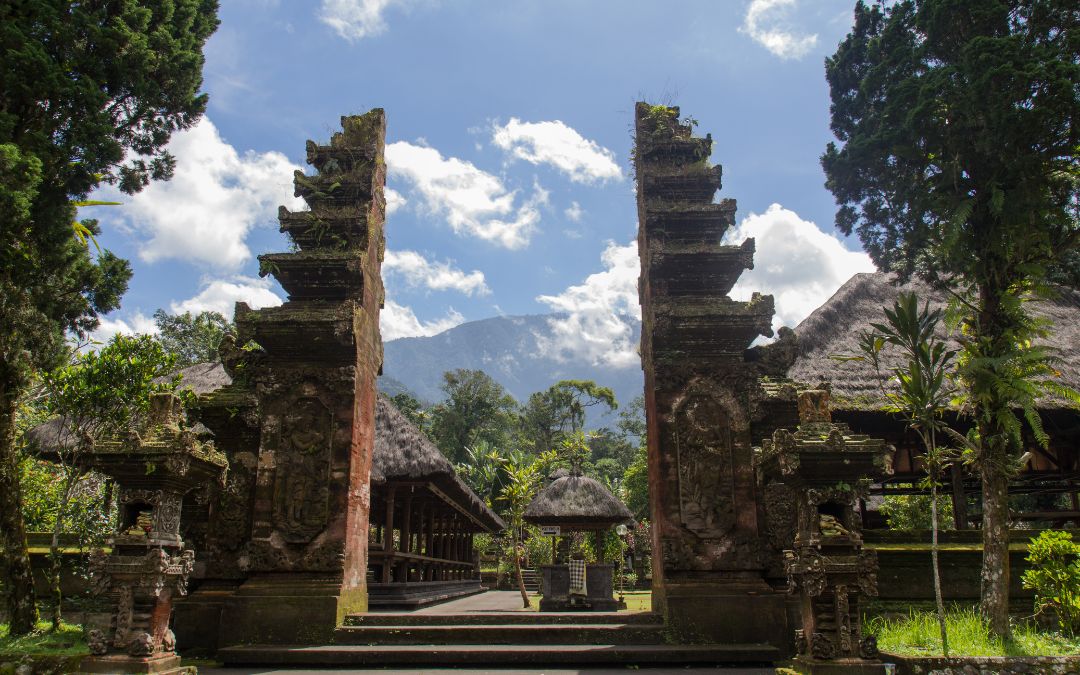
Pura Luhur Batukaru is hidden within dense rainforest slopes.
Tips for visitors:
- A sarong and a sash are required as signs of respect.
- Best experienced during annual pilgrimage ceremonies.
- Remote and serene, ideal for reflection.
Pura Ulun Danau Bratan
Floating gently on the highland waters of Lake Bratan, Pura Ulun Danau Bratan is among the most photographed ancient temples in Bali. Built in 1633, this sacred water temple was dedicated to Shiva and Parvati, with its eleven-tiered meru shrine standing as a symbol of harmony between gods and nature.
Shrouded in mist at 1,200 meters above sea level, the temple has a dreamlike, almost mysterious atmosphere. Mountains encircle the lake, adding to its sense of seclusion, as if time moves slower here. For centuries, farmers prayed at this shrine, seeking blessings for Bali’s irrigation system that sustained life across the island.
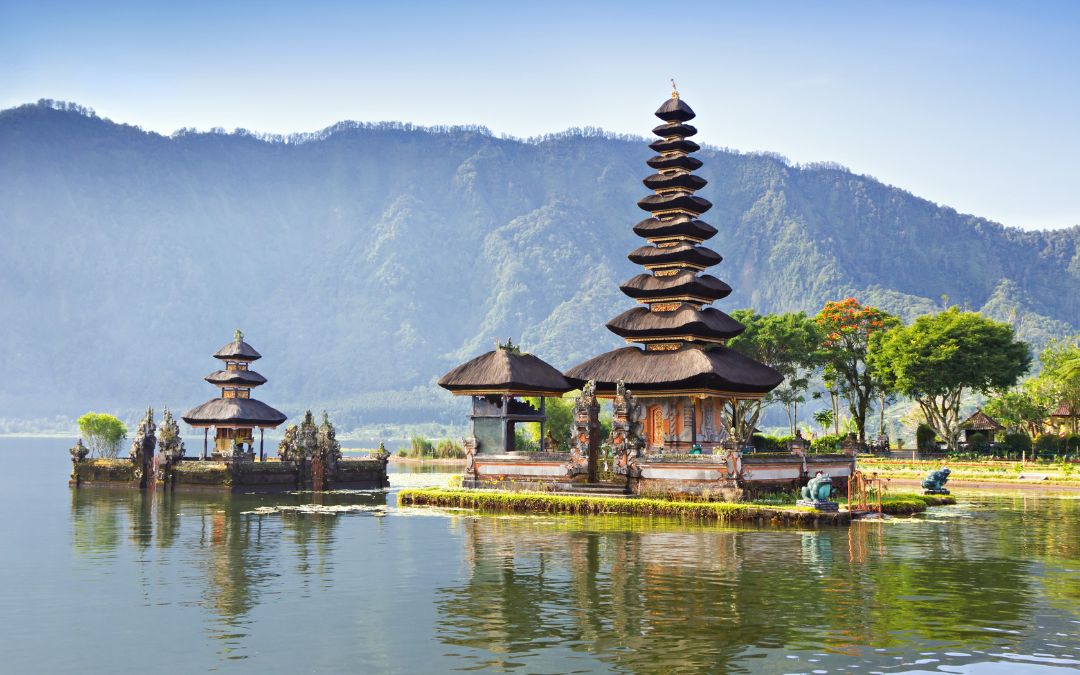
Pura Ulun Danau Bratan floats peacefully on a mountain lake.
Tips for visitors:
- Rent a paddle boat to explore the lake’s serenity.
- Arrive early morning to avoid crowds and see the mist.
- Dress modestly as a sign of respect.
>> See Tour: Classic Java Bali Tour 7 Days
Kehen Temple
On the slopes of Bangli Hill, at 483 meters above sea level, stands Kehen Temple, often referred to as the “Fire Temple.” Built around 1204 AD, with roots reaching as far back as the 9th century, it is among Bali’s most ancient sanctuaries. Dedicated to Hyang Api, the God of Fire, Kehen embodies both elemental worship and later adaptations of Hinduism. The temple’s entrance is strikingly unique—unlike most Balinese shrines, it uses a closed Candi Kurung gate instead of the common split gateway.
Within, the Bale Kul Kul (drum tower) is dramatically entwined with the trunk of a massive banyan tree, a symbol so sacred that villagers believe disaster would strike if it ever broke. With terraced courtyards, intricate stonework, and an atmosphere of mystery, Kehen feels like a living chronicle of Bali’s spiritual evolution.
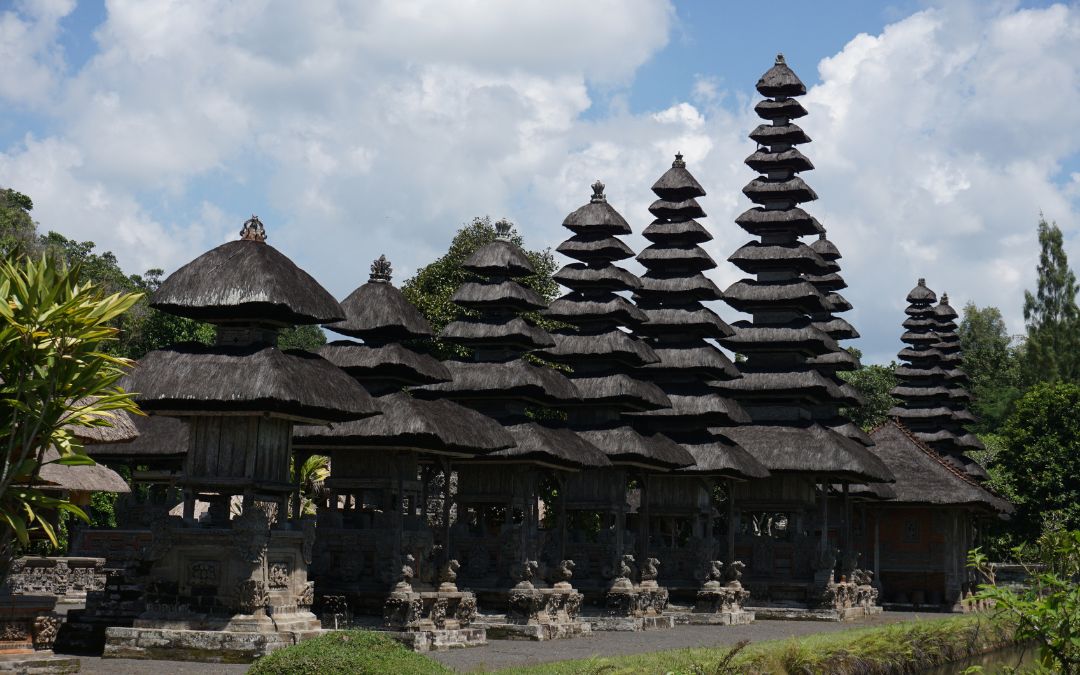
Balinese kings once worshipped at the majestic Kehen Temple.
Tips for visitors:
- About a two-hour drive from Denpasar.
- Sarong and sash required; respect ongoing rituals.
- Visit during Piodalan ceremonies for a rare spectacle.
Penataran Sasih Temple
In the quiet village of Pejeng stands Penataran Sasih Temple, a place often described as “the temple of the fallen moon.” Built in 1266 AD, it preserves one of Bali’s most enigmatic artifacts: the giant bronze nekara drum, nearly two meters tall. Believed to predate Hindu influence, this relic ties the site to Bali’s earliest civilizations. Locals see the drum as sacred, using it in rituals to call rain, honor ancestors, and even mark times of war.
Legends tell that the drum is a fragment of the moon itself, fallen to earth in distant antiquity. Surrounding it are other ancient statues—Ganesha, priestesses, guardians—that deepen the sense of mystery. Visiting Penataran Sasih is less about ornate architecture and more about confronting an artifact that seems older than history, still vibrating with spiritual energy.
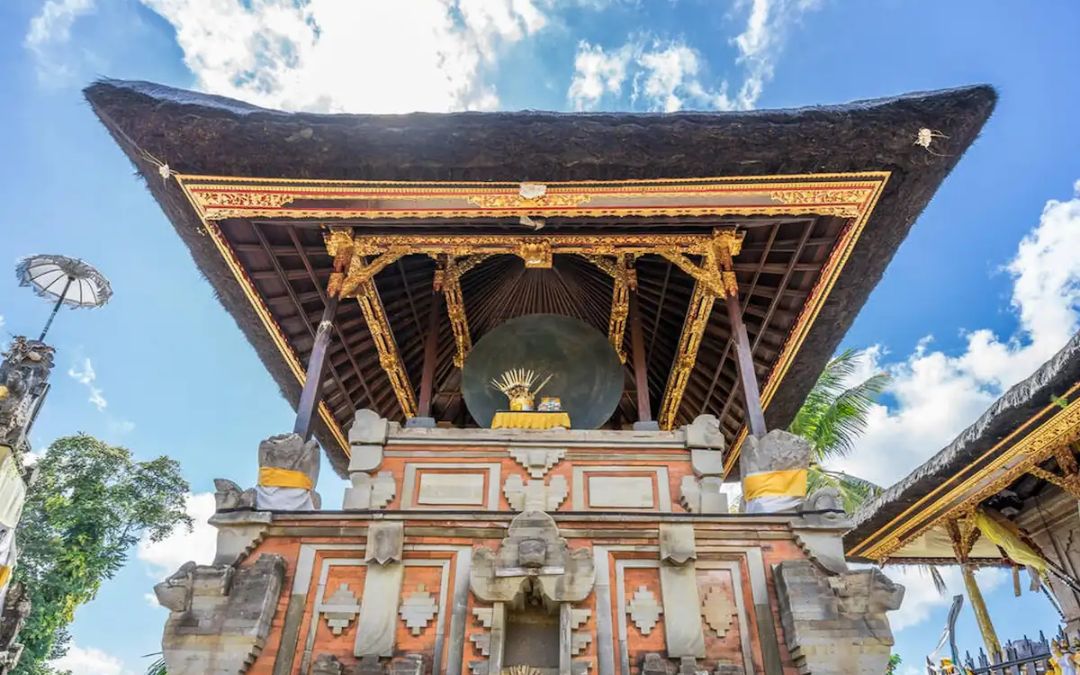
Penataran Sasih Temple preserves a 10th-century bronze drum.
Tips for visitors:
- Attend respectfully; rituals often include blessing the drum with holy water.
- Pair your visit with the nearby Tirta Empul Temple.
- Photography of the nekara should be discreet.
Tanah Lot Temple
Few sights in Bali are as iconic as Tanah Lot Temple, an ancient temple in Bali rising defiantly from a rocky outcrop in the sea. Since the 16th century, pilgrims have come here to honor the divine and to seek protection from spirits. Legends tell of a venomous serpent dwelling beneath the shrine, guarding it against evil.
Perched above the crashing surf, the temple seems almost untouchable, a solitary silhouette framed by endless ocean. Its timeless charm peaks at sunset, when the rock glows gold and crimson, making the shrine appear to hover between heaven and sea.
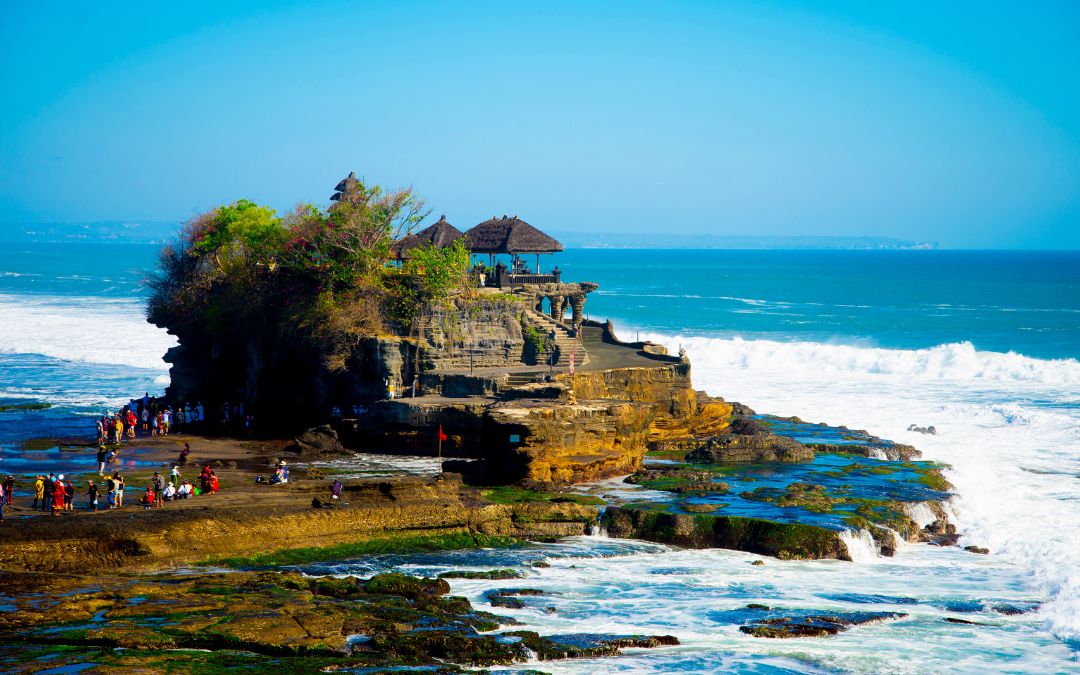
Tanah Lot Temple stands boldly on a sea-carved rock island.
Tips for visitors:
- Visit at sunset for magical views.
- Combine with Bedugul or Kintamani tours.
- The temple is open to all visitors.
Pura Taman Ayun
Surrounded by lotus-filled moats and lush gardens, Pura Taman Ayun embodies grace, balance, and mystery. First built in 1634 for the royal family of Mengwi, this ancient temple in Bali was later refined in 1937, blending Balinese tradition with touches of Chinese inspiration.
Today, it is recognized as a UNESCO World Heritage site, celebrated for its role in the island’s Subak irrigation system. Wandering among the tall meru shrines, framed by tropical greenery, visitors sense a tranquility that feels both ancient and eternal. Far from the crowds, this temple offers a meditative glimpse into a quieter Bali, where devotion is expressed in beauty and stillness.
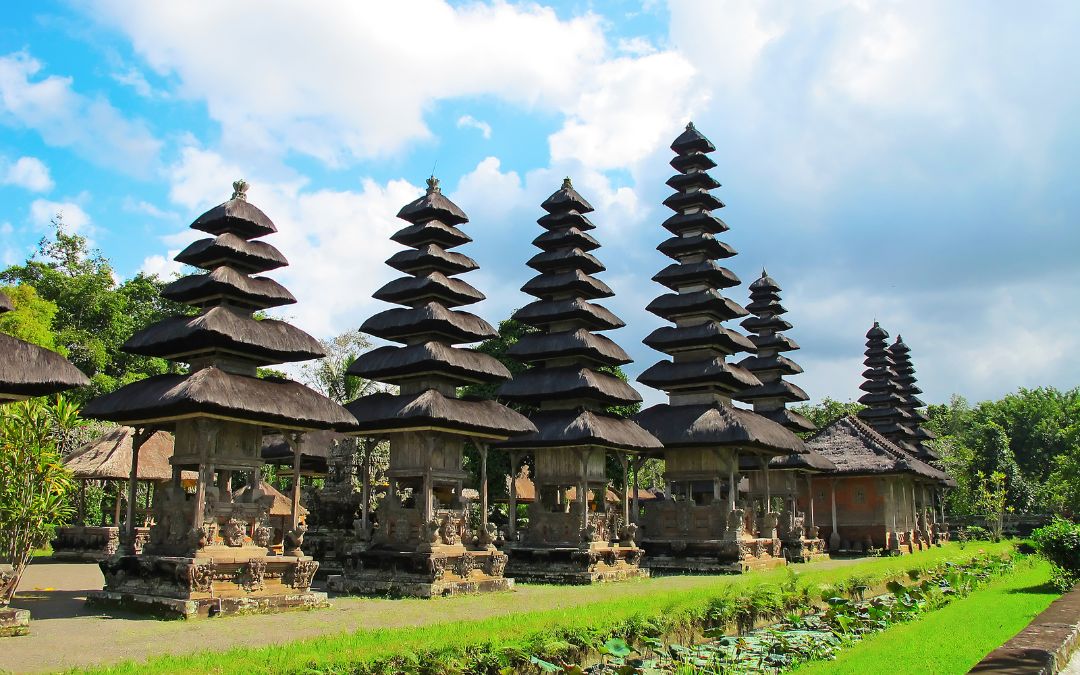
Pura Taman Ayun charms visitors with lotus ponds and towers.
Tips for visitors:
- Visit mid-morning for soft light over the gardens.
- Look out for the elegant meru towers against the sky.
- Less crowded than other famous temples, ideal for reflection.
Pura Maduwe Karang
On Bali’s northern coast in Buleleng stands Pura Maduwe Karang, a relatively young yet sacred temple, built in 1890. Though newer than many, it reflects the continuity of Bali’s ancient spiritual traditions. Dedicated to Dewi Durga and enriched with statues of epic figures like Rama and Sugriwa, it is revered by locals as a powerful sanctuary.
The temple’s stone carvings depict not only deities but also rulers of Buleleng, linking myth with history. Its atmosphere is quiet, almost secretive, a reminder that even later shrines in Bali carry the same aura of mystery as older sanctuaries.
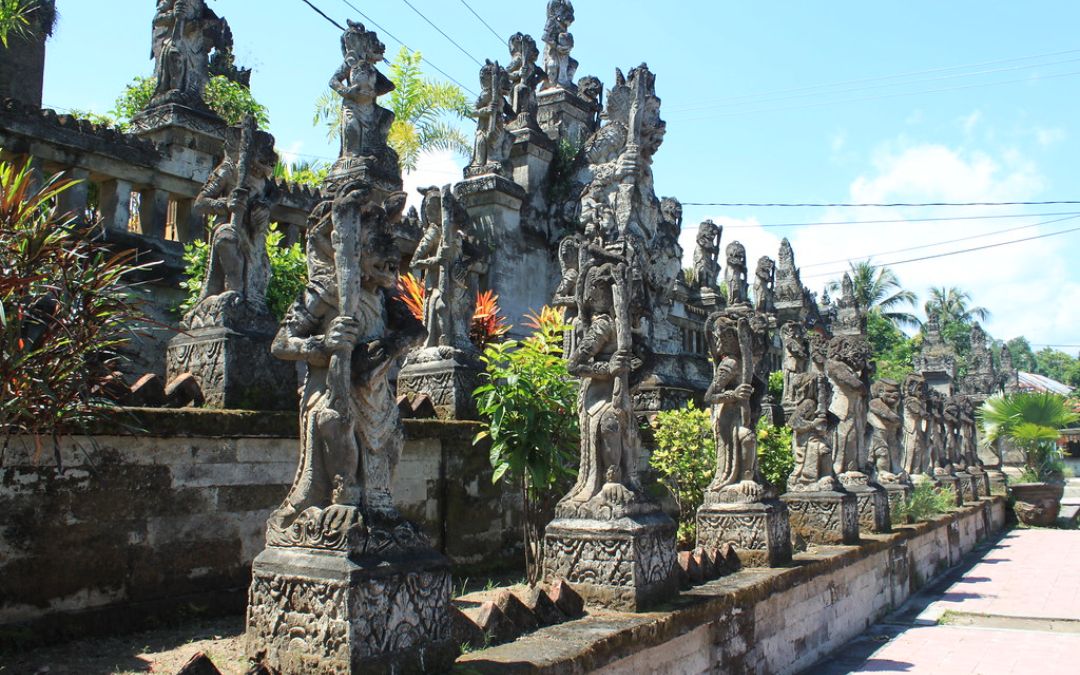
Pura Maduwe Karang showcases bicycles carved in stone relief.
Tips for visitors:
- Located in Buleleng, best reached with private transport.
- Respect local customs during ceremonies.
- Take time to admire the stone reliefs.
>> See tour: Bali Essence Tour 5 Days
Step Into Bali’s Spiritual Heart with a Tailored Itinerary
Wandering through the ancient temples in Bali is like tracing the island’s heartbeat across centuries. Each shrine, whether carved into cliffs or standing proudly by the sea, tells a story that blends myth, devotion, and timeless artistry. These sacred sites are not simply places to admire—they are gateways into Bali’s soul, alive with rituals that continue today.
If your spirit longs for a journey that goes beyond beaches and into the essence of Bali, let Asia Pioneer Travel design an itinerary crafted around your curiosity. Share your dream with us, and we will transform it into a path of discovery shaped by temples, culture, and unforgettable encounters.
